Betting professionally requires more than just picking winners; it demands strategic bankroll management to ensure long-term success. You’ll need to familiarize yourself with advanced techniques that allow you to minimize risks while maximizing potential profits. This guide will equip you with the knowledge to balance your wagers effectively, maintain discipline, and adapt your approach as conditions change. By mastering these advanced methods, you’ll take significant strides toward becoming a more sophisticated bettor and safeguarding your investment over time.
Key Takeaways:
- Employing a staking plan allows bettors to manage their wagers based on their confidence level in each bet, ensuring that losses do not significantly impact the overall bankroll.
- Diversifying betting types and markets can help mitigate risks and increase potential returns, allowing bettors to take advantage of different opportunities across various sports and events.
- Regularly reviewing and adjusting bankroll management strategies based on performance analytics helps bettors stay disciplined and aligned with their long-term financial goals.
The Financial Foundations of Bankroll Management
Understanding the foundational elements of bankroll management is vital to sustaining your betting career. A proper bankroll allows you to weather the ups and downs of betting without risking financial ruin. Start by defining your total bankroll, which should be an amount that you can afford to lose. From this base, establish your unit size, which should generally fall between 1-5% of your bankroll. This way, you can place bets confidently while minimizing the impact of inevitable losing streaks on your overall finances.
Crafting a Sustainable Bankroll Strategy
Developing a sustainable bankroll strategy involves creating a plan that aligns with your betting style and long-term goals. You should define your betting limits and stick strictly to them, ensuring that you only use money that is set aside specifically for betting. Utilize methods such as the Kelly Criterion, which helps you determine the optimal bet size based on your perceived edge and bankroll, or a fixed staking approach to maintain consistency in your wagering.
Evaluating Risk vs. Reward in Betting
Assessing the risk versus reward for each bet is fundamental to maintaining a profitable betting strategy. Factors like the odds presented and your confidence level should guide your decisions. High-risk bets might offer bigger payouts, but they can equally deplete your bankroll quickly if those bets fail. Weighing potential losses against possible gains helps in identifying value bets and ensures that you place money on wagers that enhance your overall strategy.
Striking a balance between risk and reward is necessary for long-term success in sports betting. For instance, if you find a bet with 2-to-1 odds that you believe has a 50% chance of winning, the risk may justify the potential reward. Conversely, a 5-to-1 odds bet with only a 10% chance of winning may not warrant your investment. By systematically evaluating each opportunity, you can make informed wagers that improve your bottom line while keeping your bankroll intact.
Advanced Stake Structuring Methods
Utilizing advanced stake structuring methods can significantly enhance your betting effectiveness. These techniques not only help manage your bankroll but also adapt to your level of confidence and the expected value of each wager. Consider the following approaches:
- Fixed Percentage of Bankroll
- Progressive Betting Systems
- Flat Betting
- Variable Stakes According to Confidence Level
| Method | Description |
|---|---|
| Fixed Percentage of Bankroll | Wager a set percentage of your total bankroll for each bet, adjusting as your bankroll changes. |
| Progressive Betting Systems | Gradually increase stakes after winning bets to maximize profits during hot streaks. |
| Flat Betting | Wager the same amount for each bet, promoting consistency and reducing risk. |
| Variable Stakes According to Confidence Level | Adjust your bet size based on your confidence in the outcome, allocating larger amounts to more certain bets. |
Kelly Criterion: Maximizing Your Edge
The Kelly Criterion is a mathematically driven staking method aimed at optimizing your returns while minimizing the risk of bankroll depletion. By calculating the optimal bet size based on your estimated edge and the odds offered, you ensure that your stakes grow proportionally to your bankroll. The formula is straightforward: (bp – q) / b, where b is the odds received on the wager, p is the probability of winning, and q is the probability of losing.
Percentage Betting: Balancing Growth and Safety
Percentage betting involves wagering a consistent percentage of your bankroll on each bet, allowing for sustainable growth while safeguarding against significant losses. This method adapts to your bankroll fluctuations, keeping your bets aligned with your financial capacity and confidence. As your bankroll increases or decreases, your stakes naturally adjust, ensuring you don’t expose yourself to excessive risk.
Implementing percentage betting encourages a disciplined betting approach, which is vital for long-term success. For instance, if your bankroll is $1,000 and you decide to stake 2%, your initial wager would be $20. If your bankroll grows to $1,500, your stake adjusts to $30. This adaptability not only promotes steady bankroll growth but also helps you avoid the pitfalls of overly aggressive betting strategies that can lead to rapid losses and potential ruin. By keeping your wagers proportional to your total bankroll, you maintain a safety net while still capitalizing on profitable opportunities.
Dynamic Bankroll Adjustments
Dynamic bankroll adjustments allow you to modify your betting strategy in response to changing performance metrics. By continuously evaluating your wins and losses, you can optimize your betting size to ensure your bankroll remains healthy while capitalizing on profitable opportunities. Adapting to trends in your betting outcomes ensures that you don’t overextend yourself during successful runs or chase losses unsustainably during downswings.
Adapting Your Bet Sizes Based on Performance
Your bet sizes should reflect your current performance, allowing you to adapt quickly to fluctuations in your bankroll. If you’re on a winning streak, consider increasing your bet percentage slightly to maximize profits. Conversely, during a slump, decreasing your stake can help preserve your bankroll, giving you the time needed to reevaluate strategies without excessive risk.
Utilizing a Staking Plan to Mitigate Losses
A well-structured staking plan serves as a protective measure against significant losses while maximizing potential profits. By defining specific bet sizing rules based on your bankroll percentage and performance, you can minimize the emotional aspect of betting. Plans like the Kelly Criterion or flat betting can help maintain consistency and discipline, ensuring that you stick to your strategy regardless of short-term outcomes.
Utilizing a staking plan not only mitigates losses but also encourages a methodical approach to your betting activities. For instance, a flat staking strategy might involve betting a fixed percentage, such as 1-3% of your bankroll per wager. This technique allows for gradual bankroll growth over time and protects against volatile swings. By employing a staking plan, you maintain a clear framework that shields your finances, guiding your decisions logically rather than emotionally, which is crucial for long-term success as a bettor.
Emotional Discipline and Psychological Fortitude
Mastering emotional discipline and psychological fortitude is necessary for pro bettors. The ability to remain calm under pressure and make rational decisions, even after a string of losses, can significantly impact your long-term success. Emotions can cloud judgment, leading to impulsive betting behaviors or poor decision-making. By maintaining a level-headed approach, you can adhere to your bankroll management techniques and optimize your betting strategy effectively.
Recognizing Cognitive Biases in Betting
Cognitive biases can severely distort your betting decisions and overall strategy. For instance, confirmation bias leads you to seek out information that supports your initial beliefs while ignoring contradictory evidence. Additionally, the gambler’s fallacy may cause you to think previous outcomes influence future bets, which can be detrimental to your bankroll. Developing an awareness of these biases allows you to make more informed choices.
Establishing a Routine for Mental Resilience
Creating a structured routine fosters mental resilience, enabling you to navigate the ups and downs of betting more effectively. Start by setting aside specific times for betting activities, reviewing past performances, and analyzing upcoming matches. Incorporating activities such as meditation or physical exercise can help maintain focus and reduce stress. Furthermore, keeping a betting journal will not only sharpen your self-awareness but also assist you in identifying patterns in your decision-making.
Building a routine that includes both betting and wellness activities reinforces your mental strength. By dedicating time for reflection and analysis, you enhance your ability to learn from mistakes, reduce emotional impulsiveness, and establish a disciplined approach. Engaging in mindfulness practices can be particularly beneficial, allowing you to stay present and avoid being swayed by the emotional highs and lows associated with each bet. As a result, you cultivate a well-rounded approach where betting practices are aligned with personal well-being, bolstering both your performance and confidence in your strategy.
Integrating Data Analytics into Bankroll Practices
Incorporating data analytics into your bankroll management can significantly enhance your decision-making process. By understanding and leveraging vast amounts of data, you can identify profitable betting opportunities while minimizing risks. Analyzing past performances, odds, and bookmaker margins provides insights that help shape your betting strategy. Employing advanced tools and software can simplify this process, turning raw data into actionable intelligence for informed wagering decisions.
Leveraging Statistical Models for Informed Betting
Utilizing statistical models allows you to predict outcomes with greater accuracy. By inputting various variables—such as player statistics, historical match outcomes, and situational factors—these models provide you with a quantitative basis for placing bets. Constructing predictive algorithms or using machine learning techniques can uncover patterns that your intuition might miss, leading to a more systematic and successful betting approach.
Tracking and Analyzing Betting Trends Effectively
Effective tracking and analysis of betting trends enable you to adapt your strategy based on real-time data. Monitoring shifts in betting odds, public betting percentages, and injury reports gives you an edge. Automated tools can help aggregate data across multiple platforms, revealing trends such as line movement or sudden spikes in betting volume, which often indicate where sharp money is going. This insight helps you identify value bets that others may overlook.
For example, if you consistently observe a sharp increase in betting volume on a particular team just before a game, it may suggest insider knowledge or favorable conditions. You can also analyze the impact of seasonal trends—such as how certain teams perform during specific months or against particular opponents. By staying informed and responsive to these indicators, you enhance your chances of making profitable betting decisions while preserving your bankroll more effectively.
To wrap up
Presently, mastering advanced bankroll management techniques is an vital step in your journey as a professional bettor. By implementing strategies such as the Kelly Criterion, setting risk limits, and maintaining a disciplined approach to bet sizing, you enhance your ability to sustain your bankroll over time. These practices help you minimize losses while maximizing potential gains, ultimately elevating your betting strategy to a more professional level. Focus on refining these techniques, and you’ll find your betting endeavors more rewarding and sustainable in the long run.
Q: What is Advanced Bankroll Management?
A: Advanced bankroll management refers to a systematic approach used by professional bettors to optimize and control their betting funds. This involves setting aside a specific sum of money designated for betting purposes, known as the bankroll, and applying various strategies to manage it. Techniques can include determining stake sizes based on the perceived edge of each bet, adjusting the bankroll for variance in losses or wins, and using different bankroll allocation methods such as flat betting, percentage betting, or betting units. The aim is to maximize long-term profitability while minimizing the risk of depleting the bankroll.
Q: How does stake sizing affect my betting strategy?
A: Stake sizing is a critical component of betting strategy because it helps to balance risk and reward. By determining how much to bet on each wager based on confidence level, bankroll size, and odds, bettors can better manage exposure to loss while capitalizing on winning opportunities. Common approaches include the Kelly Criterion, which calculates the optimal bet size based on the expected value of a wager, or flat betting, where a consistent stake is used regardless of the situation. The key is to develop a stake sizing method that aligns with your betting goals and risk tolerance, which can help maintain a sustainable betting practice over time.
Q: Can bankroll management help recover from losses?
A: While bankroll management cannot guarantee a recovery from losses, it can provide a structured way to approach betting after a downturn. Implementing a well-defined bankroll management system allows bettors to stay disciplined and avoid making emotional decisions that could exacerbate losses. By adjusting stake sizes, focusing on value bets, and potentially reassessing strategies, bettors can mitigate the impact of losing streaks and enhance their chances of returning to profitability. Therefore, effective bankroll management can serve as a foundation for long-term success, regardless of temporary setbacks.




